Abstract
The phytohaemagglutinin-induced responses of lymphocytes were found to be inhibited by plasma from patients with leprosy when compared with their responses in pooled serum from healthy donors. When patients developed reversal reactions, the initial inhibitory effect of their plasma was replaced by an augmentary effect on the responses to phytohaemagglutinin. The period of augmentation coincided with that of the reversal reaction in patients with borderline tuberculoid leprosy, but was delayed in patients with borderline lepromatous leprosy. The plasma from each leprosy patient was also observed to have the same effect on lymphocytes from unrelated individuals, showing that the inhibition and augmentation were due to factors in the plasma and not to a change in lymphocyte receptors. It is possible that the normal stable state of leprosy results from the presence of factors in plasma which act as a control mechanism, and that delayed hypersensitivity reactions may be caused by a breakdown of this control.
Full text
PDF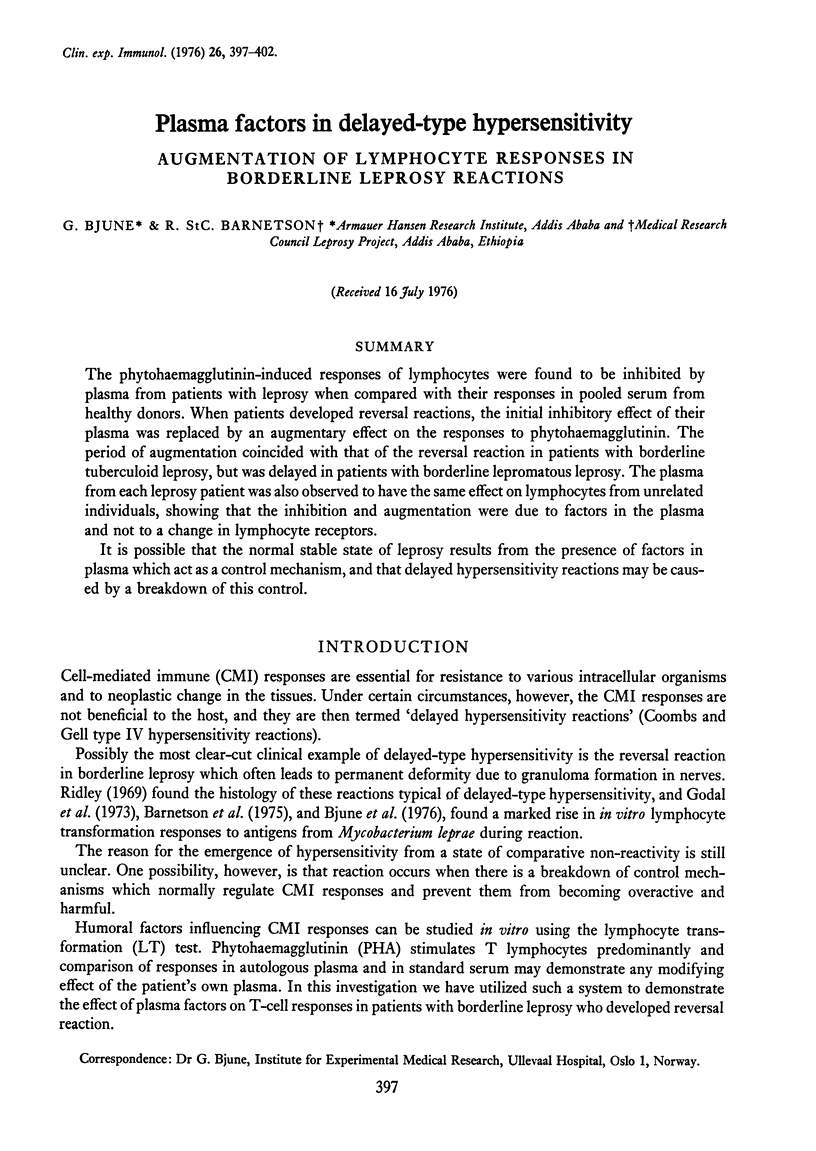
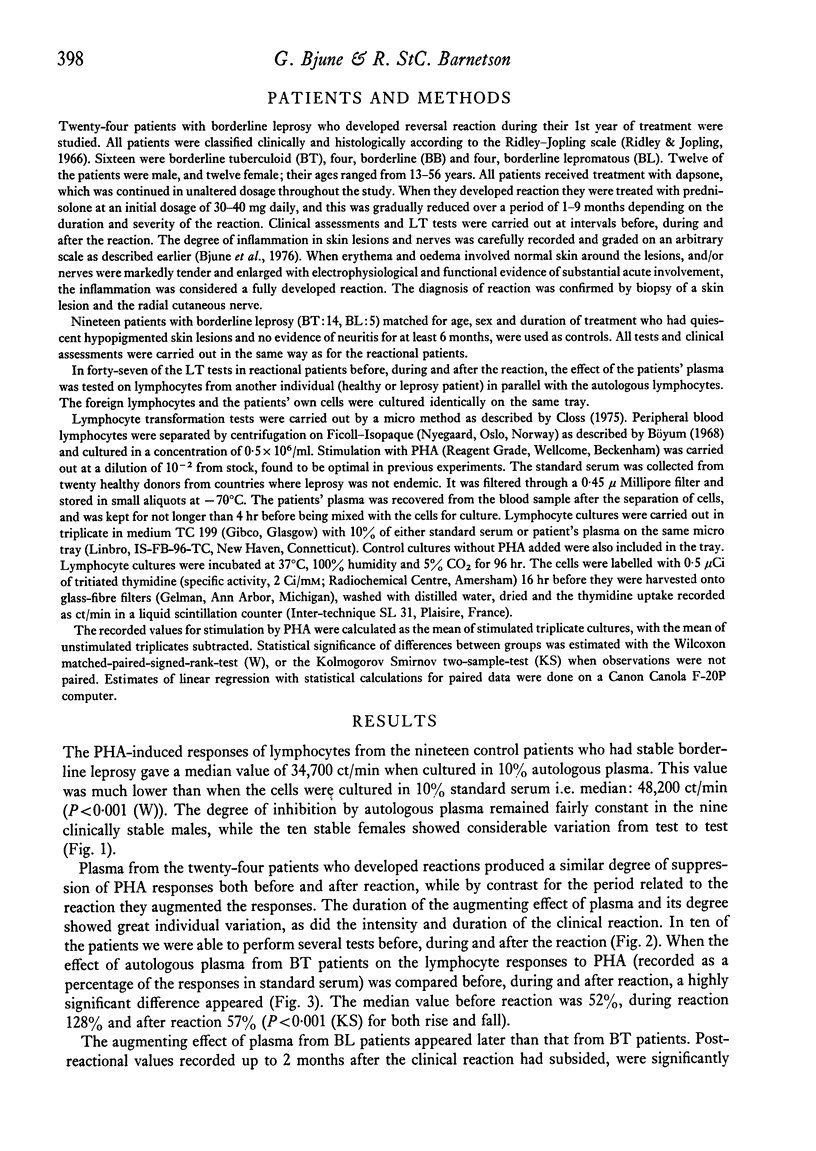
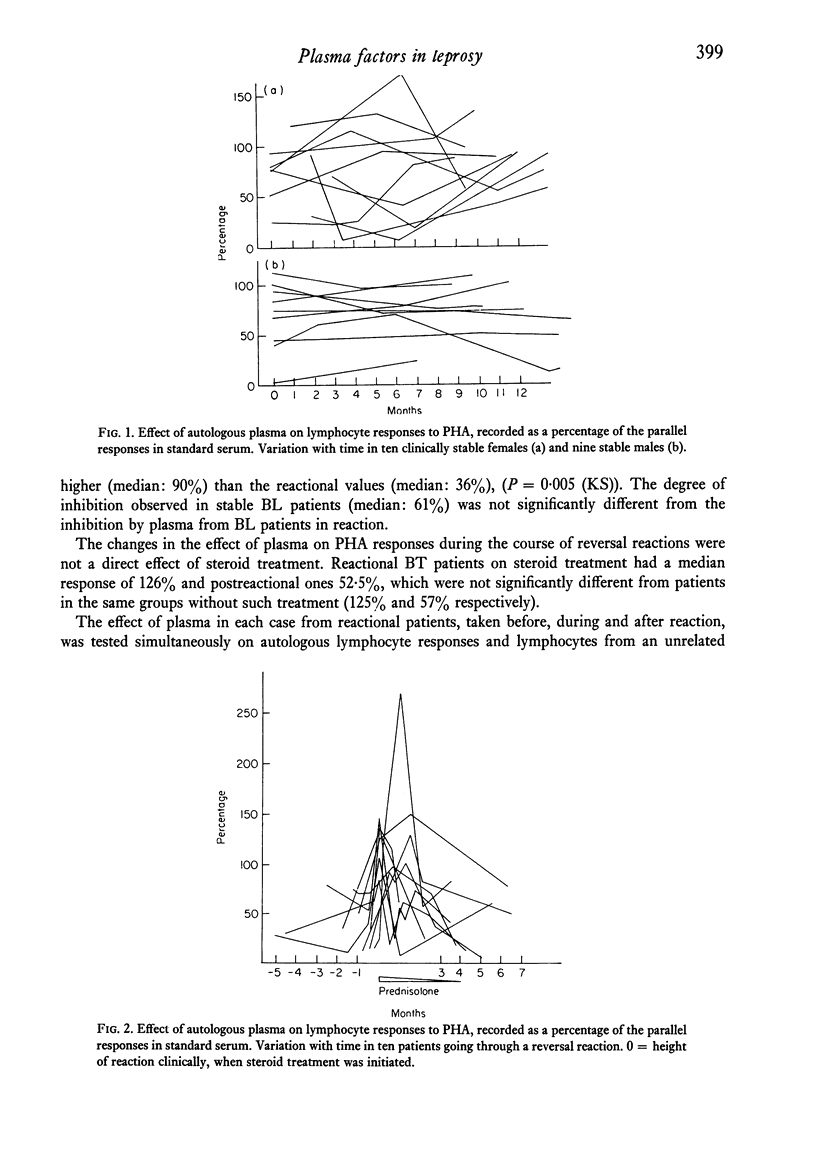
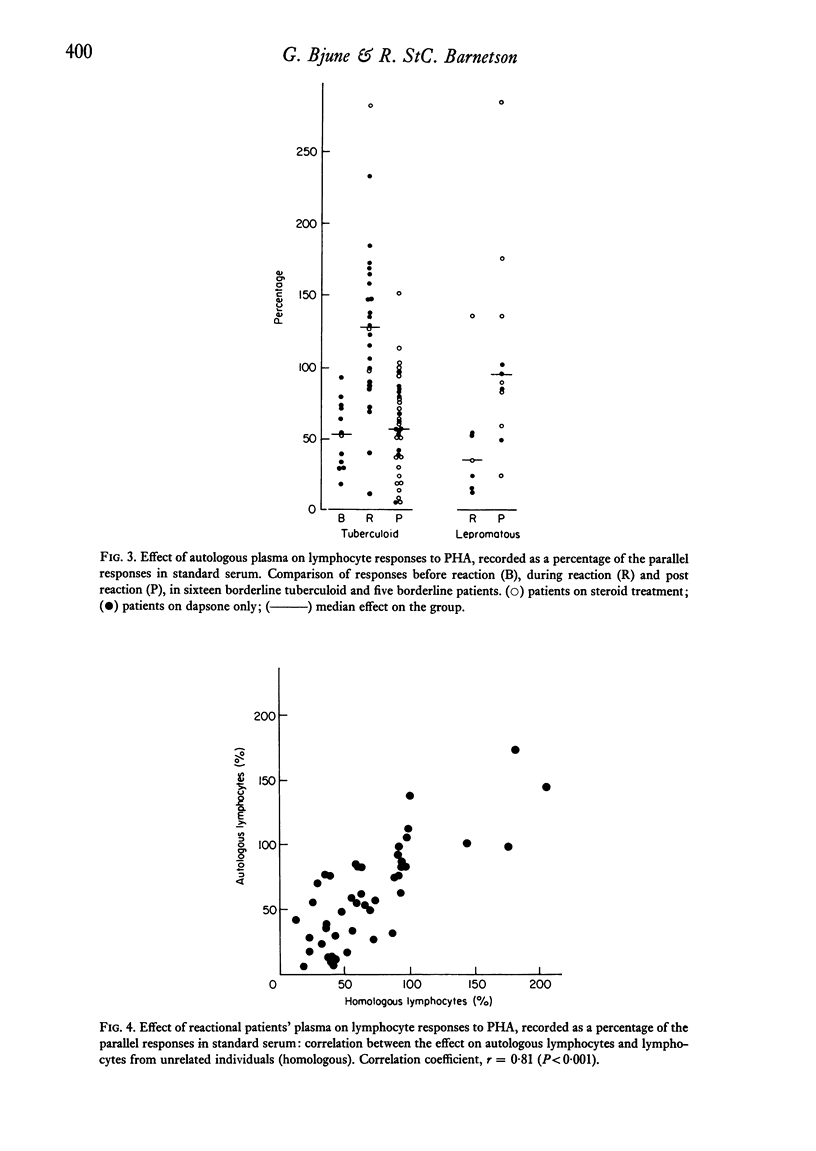
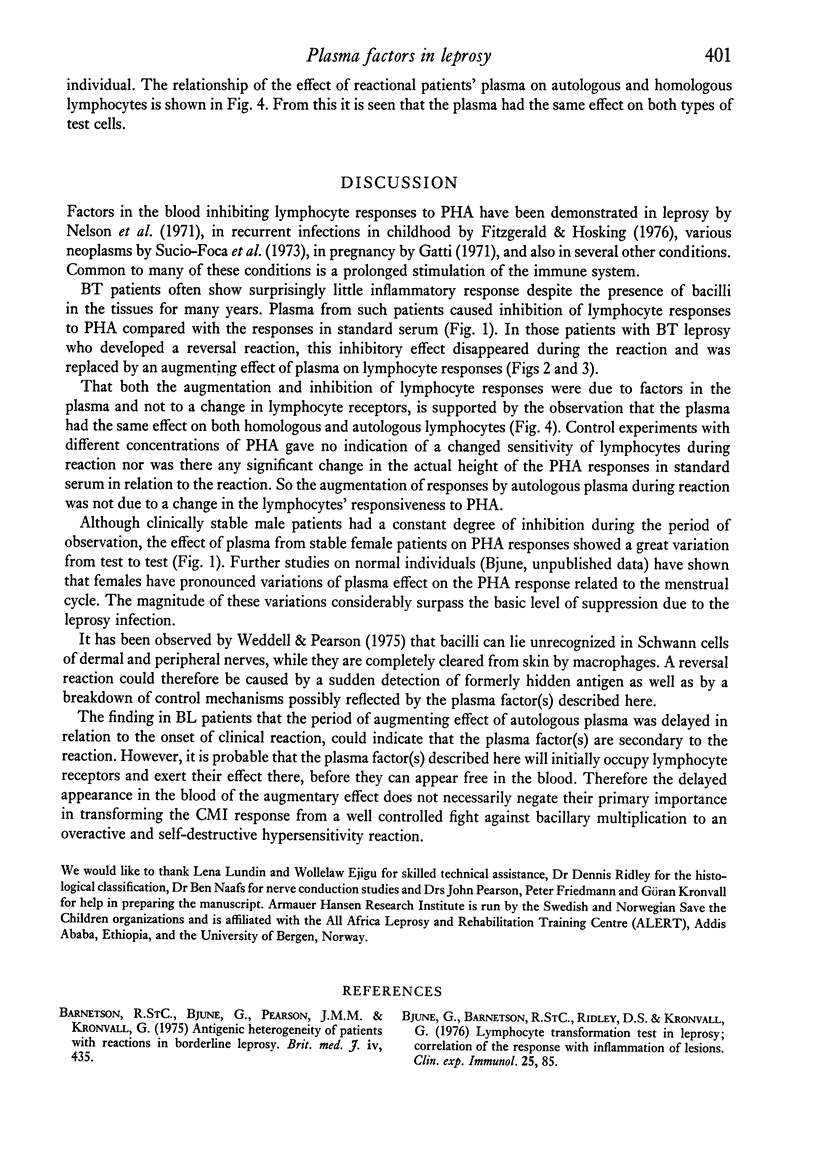
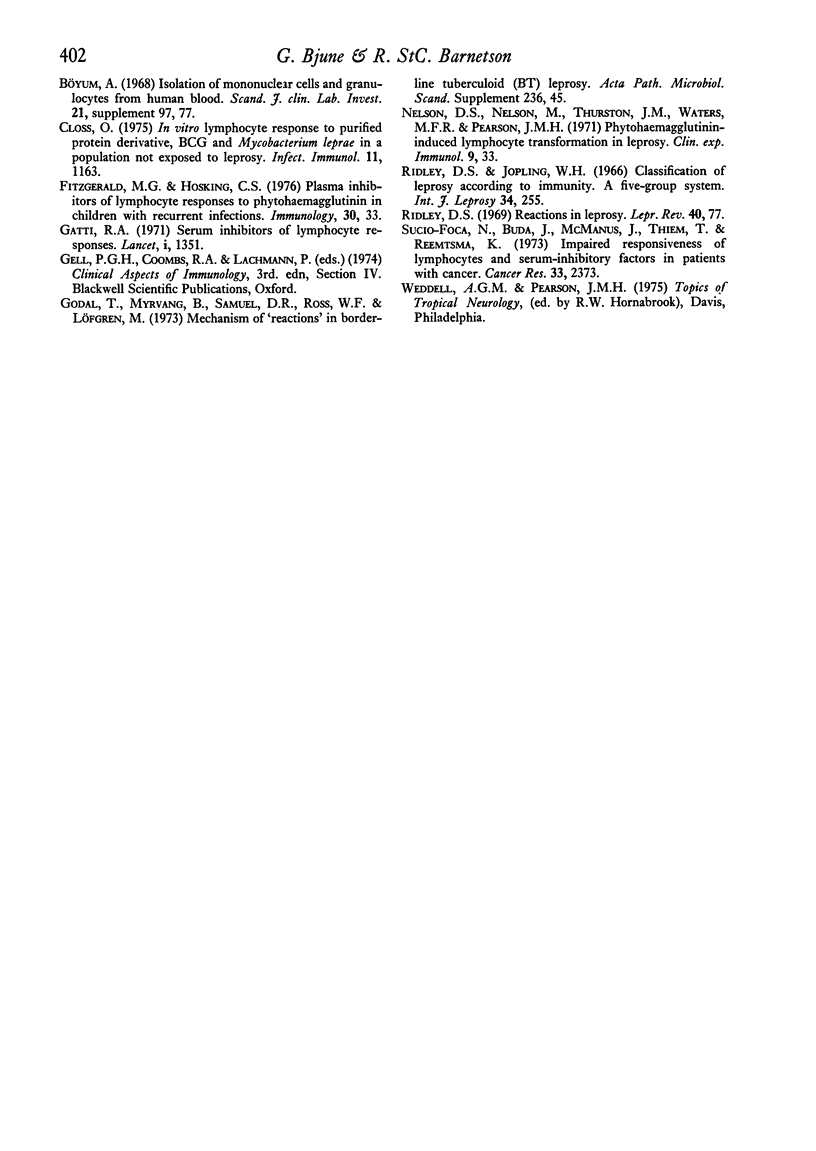
Selected References
These references are in PubMed. This may not be the complete list of references from this article.
- Barnetson R. S., Bjune G., Pearson J. M., Kronvall G. Antigenic heterogeneity in patients with reactions in borderline leprosy. Br Med J. 1975 Nov 22;4(5994):435–437. doi: 10.1136/bmj.4.5994.435. [DOI] [PMC free article] [PubMed] [Google Scholar]
- Closs O. In vitro lymphocyte response to purified protein derivative, BCG and Mycobacterium leprae in a population not exposed to leprosy. Infect Immun. 1975 Jun;11(6):1163–1169. doi: 10.1128/iai.11.6.1163-1169.1975. [DOI] [PMC free article] [PubMed] [Google Scholar]
- Fitzgerald M. G., Hosking C. S. Plasma inhibitors of lymphocyte response to phytohaemagglutinin in children with recurrent infections. Immunology. 1976 Jan;30(1):33–42. [PMC free article] [PubMed] [Google Scholar]
- Gatti R. A. Serum inhibitors of lymphocyte responses. Lancet. 1971 Jun 26;1(7713):1351–1352. doi: 10.1016/s0140-6736(71)91906-4. [DOI] [PubMed] [Google Scholar]
- Godal T., Myrvang B., Samuel D. R., Ross W. F., Lofgren M. Mechanism of "reactions" in borderline tuberculoid (BT) leprosy. A preliminary report. Acta Pathol Microbiol Scand Suppl. 1973;236(0):45–53. [PubMed] [Google Scholar]
- Nelson D. S., Nelson M., Thurston J. M., Waters M. F., Pearson J. M. Phytohaemagglutinin-induced lymphocyte transformation in leprosy. Clin Exp Immunol. 1971 Jul;9(1):33–43. [PMC free article] [PubMed] [Google Scholar]
- Ridley D. S., Jopling W. H. Classification of leprosy according to immunity. A five-group system. Int J Lepr Other Mycobact Dis. 1966 Jul-Sep;34(3):255–273. [PubMed] [Google Scholar]
- Ridley D. S. Reactions in leprosy. Lepr Rev. 1969 Apr;40(2):77–81. doi: 10.5935/0305-7518.19690016. [DOI] [PubMed] [Google Scholar]
- Suciu-Foca N., Buda J., McManus J., Thiem T., Reemtsma K. Impaired responsiveness of lymphocytes and serum-inhibitory factors in patients with cancer. Cancer Res. 1973 Oct;33(10):2373–2377. [PubMed] [Google Scholar]


